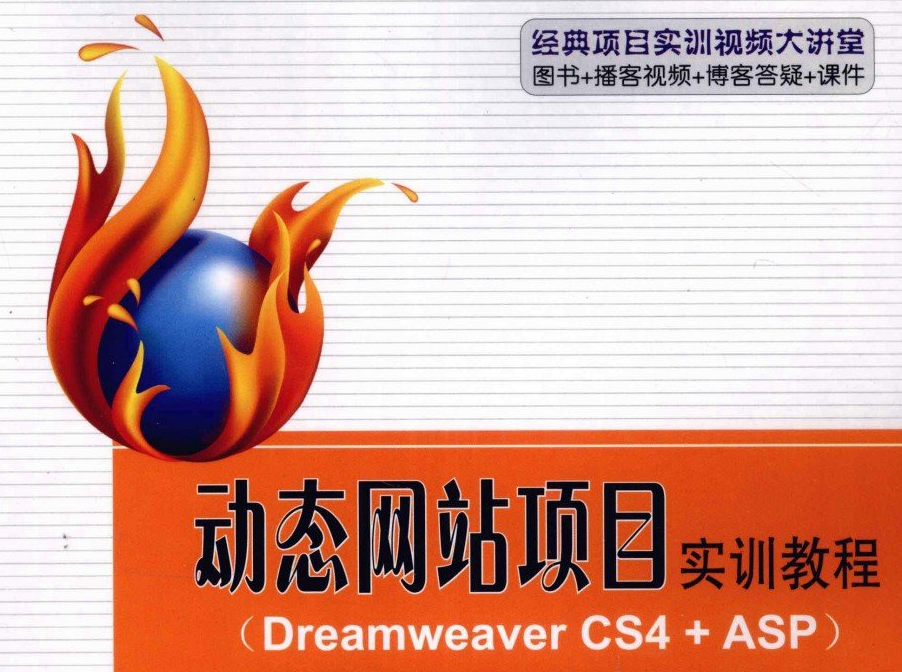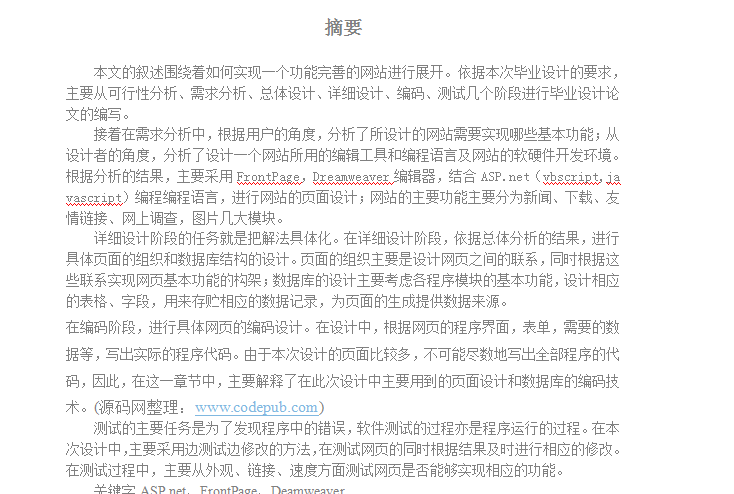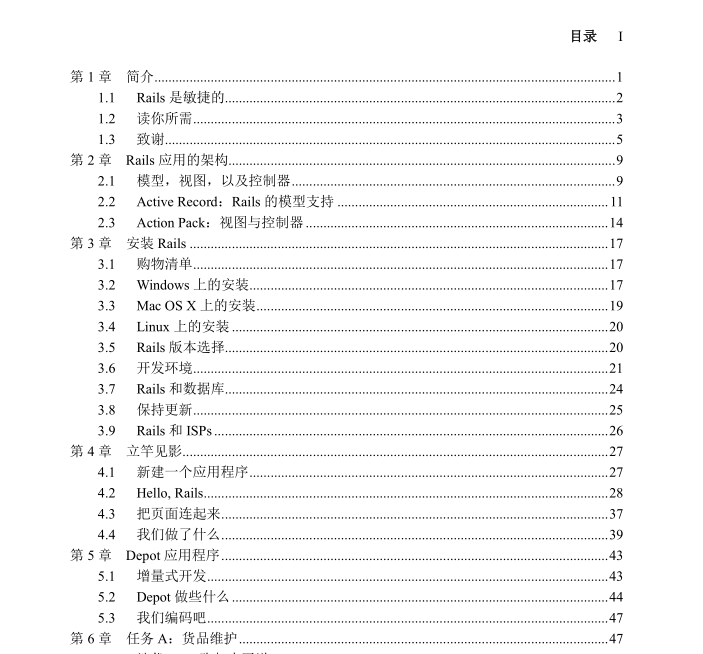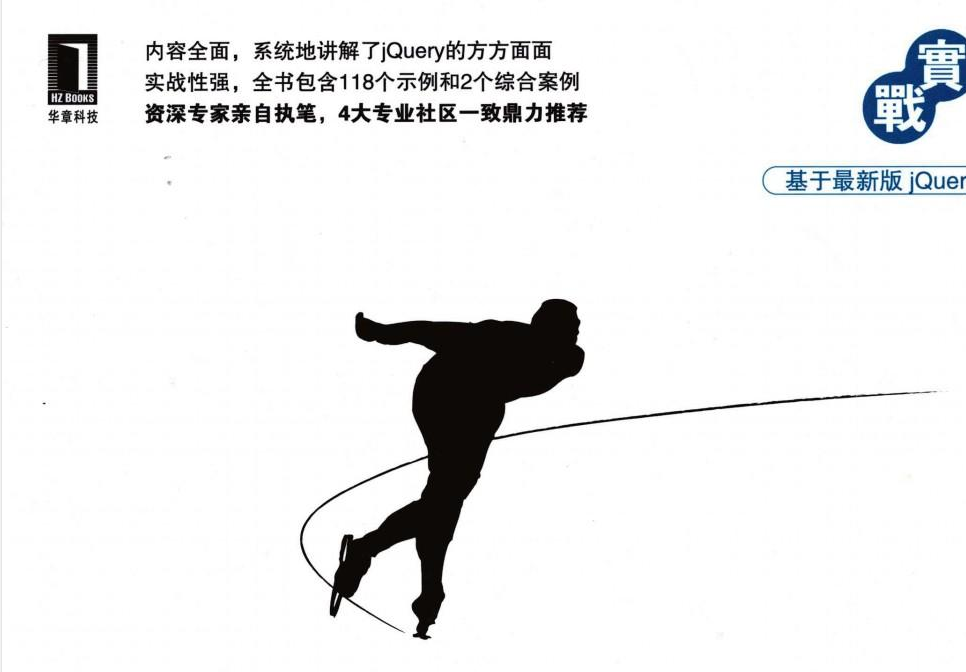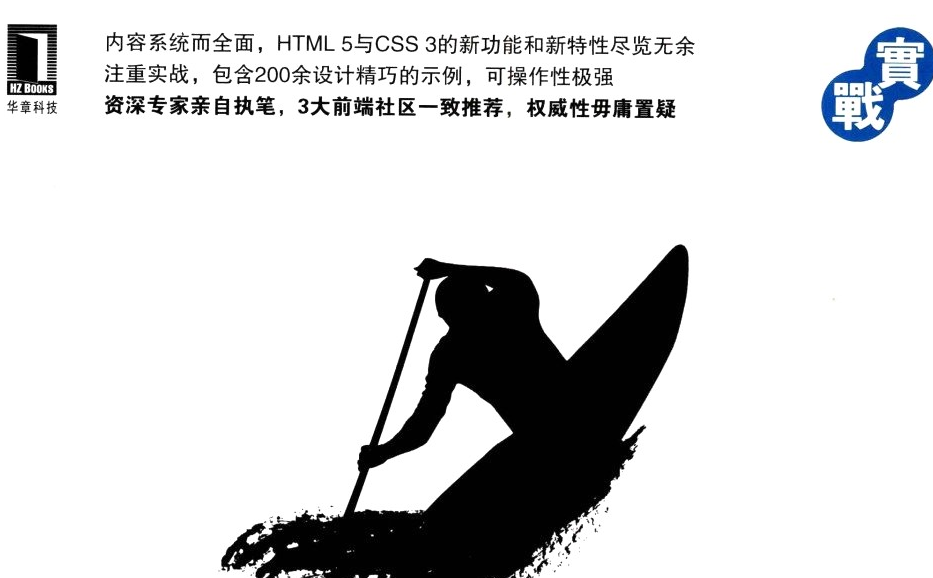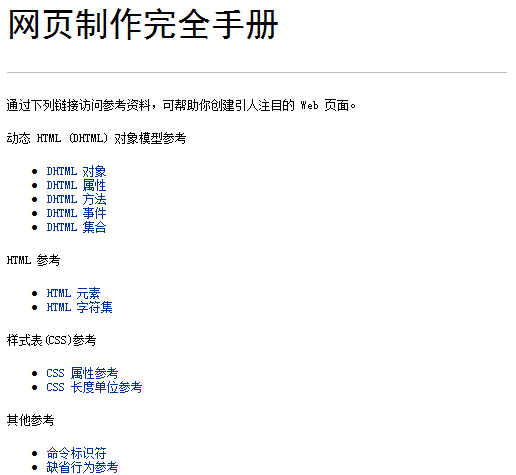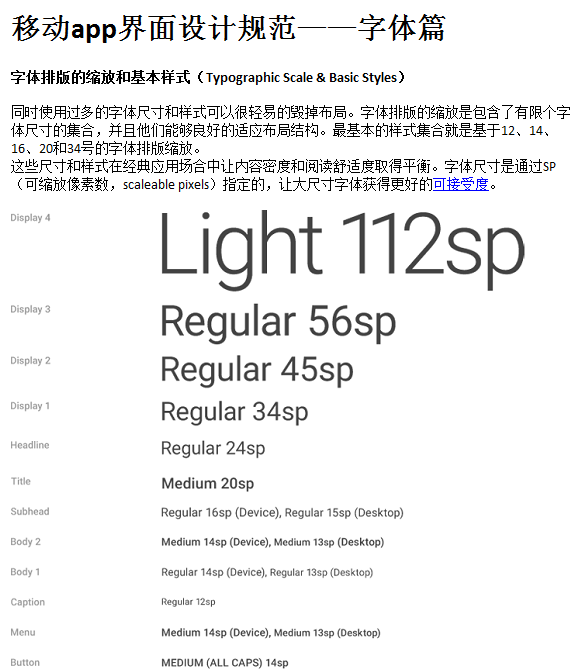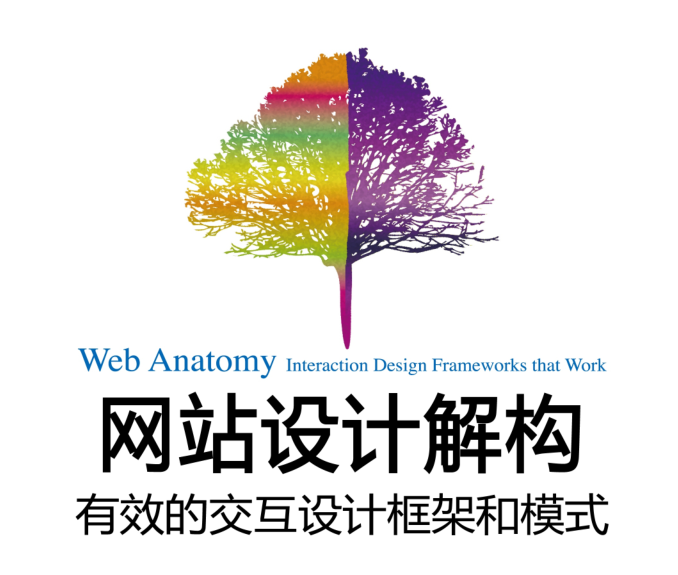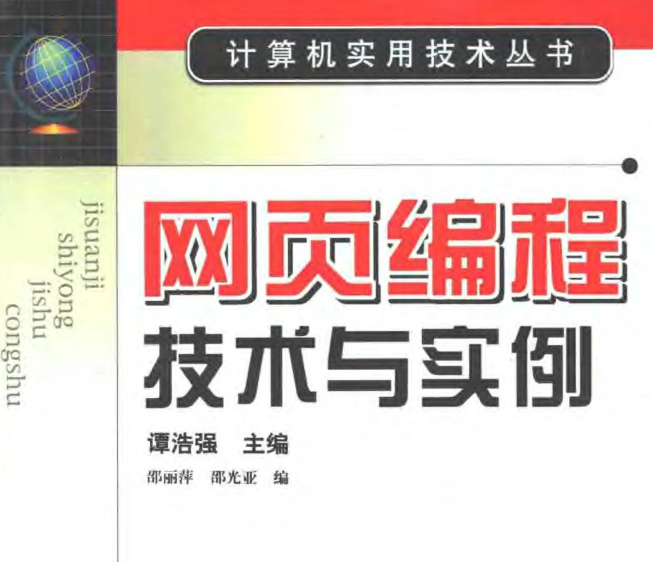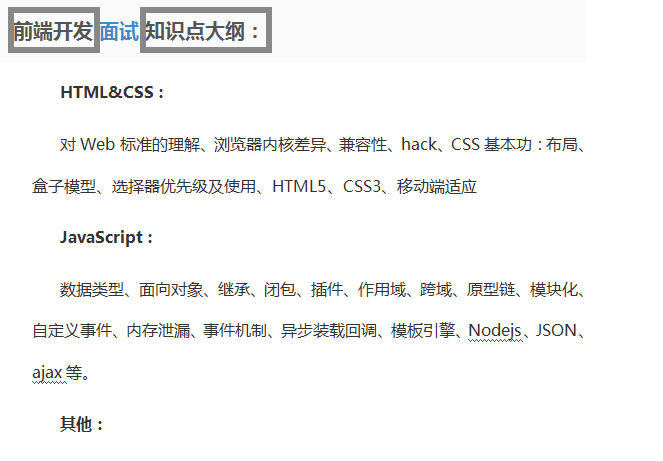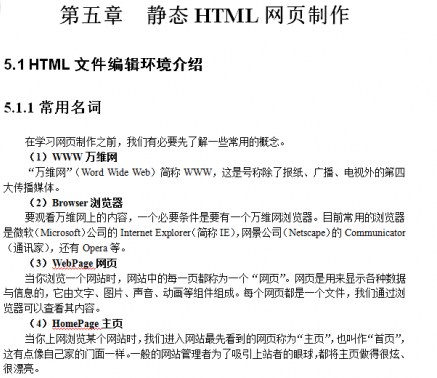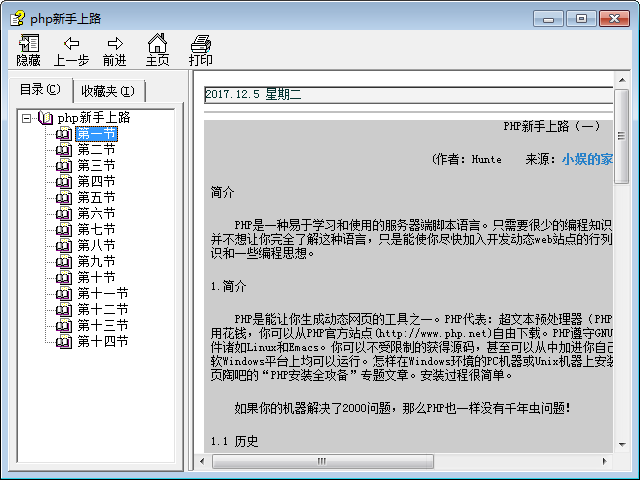Home > Download > Learning resources > Web page production

<p> <strong>brief introduction:</strong> </p> <p> "Dynamic Website Project Training Tutorial (Dreamweaver CS4 ASP) (with CD)" edited by Deng Botao, Cha Weiliang, and Fan Fuwei introduces the method of developing and producing dynamic websites using Dreamweaver CS4 combined with ASP. The main contents include: building an ASP dynamic website operating environment, registration and login module, news release module, search query module, voting survey module, message board module, network address book module, backend management module, as well as online examination system and online bookstore comprehensive drill project . Structurally, it first provides a complete website framework, and then implements the common typical functional modules of this dynamic website one by one. From "whole" to "parts", it always gives readers a clear and complete overall concept and concept of a dynamic website. Making implementation process concept. <br /> "Dynamic Website Project Training Tutorial (Dreamweaver CS4 ASP) (included with CD)" has clear levels, a concise and novel structure, and typical and practical projects. It can be used as a computer application and related professional teaching material, and can also be used as a training book for related professional positions or for technical personnel reference book. </p>
Web page production30463282017-12-27
<p class="MsoNormal" style="text-indent:21pt;"> The narrative of this article revolves around how to implement a fully functional website. According to the requirements of this graduation project, the graduation project thesis will be written mainly from the feasibility analysis, demand analysis, overall design, detailed design, coding, and testing stages. </p> <p class="MsoNormal" style="text-indent:21pt;"> Then in the demand analysis, from the user's perspective, it analyzes what basic functions the designed website needs to implement; from the designer's perspective, it analyzes the editing tools and programming languages used to design a website, as well as the website's software and hardware development environment. According to the analysis results, we mainly use <span>FrontPage, Dreamweaver editor, combined with ASP.net (vbscript, javascript) programming language to design the website's page; the main functions of the website are mainly divided into news, downloads, friendly links, online Survey, pictures and several major modules. </span> </p> The task of the detailed design phase is to concretize the solution. In the detailed design stage, based on the results of the overall analysis, the organization of specific pages and the design of the database structure are carried out. The organization of the page is mainly to design the connections between web pages, and at the same time implement the structure of the basic functions of the web page based on these connections; the design of the database mainly considers the basic functions of each program module, and designs corresponding tables and fields to store corresponding data records. , providing data sources for page generation. <p class="MsoNormal" style="text-indent:21pt;"> </p> In the coding stage, the coding design of specific web pages is carried out. In the design, the actual program code is written based on the program interface, form, required data, etc. of the web page. Since there are many pages in this design, it is impossible to write out all the program codes. Therefore, in this chapter, the main page design and database coding techniques used in this design are mainly explained. <p class="MsoNormal">
Web page production30464412017-12-27
The first edition of "<strong>The Agile Way of Web Development: Using Rails for Agile Web Development (Original Book 4th Edition)</strong>" won the JOLT Award for "Best Technical Book". Based on the content structure of the first three editions, the fourth edition adds content about new features and best practices in Rails. This book starts with the step-by-step creation of a real application and then introduces the built-in functionality of Rails. The book is divided into three parts. The first part introduces the installation of Rails, application verification, the architecture of the Rails framework, and the knowledge of Ruby language; the second part uses an iterative method to create applications, and then builds test cases according to the agile development model, and finally uses capistrano completes the deployment; the third part methodically fills in the missing knowledge and covers enough to cope with daily practical work. This book has both intuitive examples and in-depth analysis. It also covers all aspects of relevant knowledge in web application development. It can be called a comprehensive and easy-to-understand masterpiece. <br /> "The Way of Agile Web Development: Using Rails for Agile Web Development (4th Edition of the Original Book)" is suitable for beginners and intermediate readers of Ruby and Rails, and can be used as a reference manual for developers.
Web page production30464832017-12-27
<p> <strong>brief introduction</strong> </p> <p> Well-designed forms can make users feel comfortable and happy to register, pay, and create and manage content. This is the secret weapon for online business success. "Web Form Design: The Art of Turning Stone into Gold" tells the true meaning of form design through unique and profound insights and rich and real examples. By reading "Web Form Design: The Art of Turning Stone into Gold", novice designers can have extensive exposure to all the components of excellent form design. Experienced, senior designers can provide in-depth understanding of problems and solutions that were not previously noticed. <br /> Web Form Design: The Art of Turning Touch into Gold is intended for form designers or developers, but is also suitable for usability engineers, website developers, product managers, visual designers, interaction designers, information architects, and anyone involved with forms. Read and refer to the person who designed the questionnaire. </p> <p> <strong>Table of contents: </strong> </p> <p> Part I Form Structure<br /> Chapter 1 Form Design<br /> Chapter 2 Organization of Forms<br /> Chapter 3 The Road to Completion<br /> Part II Form Elements<br /> Chapter 4 Tag<br /> Chapter 5 Input Box<br /> Chapter 6 Action<br /> Chapter 7 Help Text<br /> Chapter 8 Mistakes and Success<br /> Part III Form Interaction<br /> Chapter 10 Redundant input<br /> Chapter 11 Additional Input<br /> Chapter 12 Selection-Based Input<br /> Chapter 13 Step by step<br /> Chapter 14 The Future of Forms </p>
Web page production30466442017-12-27
中文名: Pro HTML5 Performance原名: Pro HTML5 Performance <br /> 作者: <br /> 图书 <br /> 分类: 软件 <br /> 资源格式: PDF <br /> 出版社: Apress <br /> 书号: 9781430245247 <br /> 发行时间: 2012年10月24日 <br /> 地区: <br /> 语言: <br /> 简介: <br /> 内容介绍: <br /> Pro HTML5 Performance provides a practical guide to building extremely fast, light-weight and scalable websites using fully standards compliant techniques and best practices. It strikes a balance between imparting best-practice information for when you’re building ground up and instantly applicable techniques to help you solve issues with your existing projects. <br /> In addition to a wealth of tips, tricks and secrets you’ll find advice and code samples that elegantly layout the problems your facing and the best ways of solving them. By reading Pro HTML5 Performance you’ll squeeze every last ounch of performance from your code, giving your applications unrivalled speed and cost-efficiency. <br /> What you’ll learn <br /> Optimize your HTML5, CSS, and JavaScript for client-side performance <br /> Reduce your code's bandwidth to achieve both speed and cost savings <br /> Learn to target multiple devices from the same page <br /> See how your HTML5 content can gracefully degrade to older browsers <br /> Create advanced applications, such as animations, with a light footprint <br /> Make HTML5's semantic markup work for you <br /> Who this book is for <br /> This book is ideal for front-end programmers who know the basics but who want to master the techniques for creating high-performance web sites. It is equally applicable to people who want to architect big sites ‘right first time’ or those that want to apply some of the concepts to their existing site to make it run a bit faster or same them a little money. Whether you go 'all out' and use everything or just apply some concepts to your existing sites is up to you.
Web page production30461622017-12-27
"The Definitive Guide to jQuery" is comprehensive in content, systematically explains all aspects of jQuery, and is highly practical. The book contains 118 examples and 2 comprehensive cases. It is written by senior experts and is highly recommended by the four major professional communities. <br /> jQuery is another excellent JavaScript framework after Prototype. It is very popular among developers around the world and has become the de facto standard in the field of web development. iQLJery, with its lightweight size, powerful selector, excellent DOM encapsulation, and rich plug-in support, makes it convenient for the majority of Web front-end developers and greatly improves their development efficiency; in addition, jQuery’s perfect Ajax functions, behaviors and The separation of the structural layer and the reliable event processing mechanism also make Web back-end developers even more powerful, and they can implement complex functions with a small amount of code. Especially with the release of the new version 1.4. Therefore, in order to improve the efficiency of Web development and strengthen the functions of Web applications, proficient use of iQuery is an essential ability for Web developers. <br /> About the Author <br /> Tao Guorong is a senior Web technology expert with more than 10 years of development experience. He is one of the earliest front-line technicians and training instructors specializing in Web development in China. He is obsessed with the research and practice of Web development technologies such as JavaScript, jQuery and Aiax, and has long been focused on the optimization of HTML pages and user experience research. He has rich practical experience in page framework construction, data flow analysis, and page static optimization. In addition, he is also an expert in Microsoft technology and is proficient in C#, ASP. NEr and SQL Server technologies, and published many related works.
Web page production30465102017-12-27
[Book Introduction]<br /> ☆The content is rich and detailed, the language is easy to understand, and there are nearly a hundred examples in the book, allowing you to master website construction technology step by step. <br /> ☆The book comes with a Flash website case so that you can have an in-depth understanding of the Flash website construction process. <br /> ☆In-depth explanation of the application of Flash XML, Flash video technology, and reading and saving technology of Flash and database. <br /> ☆webstudio forum online support Q&A. <br /> ☆Sample website: http://sample.webstudio.com.cn <br /> This book is divided into 12 chapters, focusing on Flash website technology. The book uses a complete "case implementation of Flash website" as the main line. In each chapter, relevant Flash technical knowledge points are explained, including Flash website structure analysis, Accurate preloading, Flash full-screen technology, Flash navigation, XML, formatted external text, sound, video, and dynamic data processing between Flash and databases. The book has nearly a hundred examples and a complete Flash website case with reusable functions. Although this book is aimed at beginner and intermediate user groups, it still has a certain scope of application. It is not suitable for readers who have never been exposed to ActionScript. <br /> [Book List] Chapter 1 The Development of Flash Website 1 <br /> 1.1 A brief history of the development of flash 1 <br /> 1.2 HTML page and flash 5 <br /> 1.3 The future of flash websites 6 <br /> Chapter 2 Flash Website Planning 7 <br /> 2.1 Structural planning of flash website 7 <br /> 2.1.1 Structure of flash website 7 <br /> 2.1.2 Flash hierarchy 9 <br /> 2.2 Flash website design planning 11 <br /> 2.3 Content planning of flash website 13 <br /> 2.3.1 Content planning form 13 <br /> 2.3.2 Content planning process 14 <br /> 2.4 Implementation after completion of flash website planning 14 <br /> Chapter 3 Actionscript commonly used in flash websites 21 <br /> 3.1 Commonly used actionscript 21 <br /> 3.1.1 getbytesloaded() and getbytestotal() 21 <br /> 3.1.2 geturl() 22 <br /> 3.1.3 loadmovie() and unloadmovie() 23 <br /> 3.1.4 attachmovie and removemovieclip 27 <br /> 3.1.5 Path 30 <br /> .3.1.6 array array 31 <br /> 3.2 Loop in flash 41 <br /> 3.2.1 Frame loop 41 <br /> 3.2.2 for loop 43 <br /> 3.2.3 onenterframe loop 44 <br /> 3.2.4 setinterval loop 44 <br /> 3.3 Application of easing 47 <br /> 3.3.1 Static easing 47 <br /> 3.3.2 Custom easing 48 <br /> 3.3.3 Dynamic easing 49 <br /> 3.3.4 Use external classes to set easing (tween class and easing class) 51 <br /> 3.3.5 Extensible easing function 54 <br /> 3.3.6 onmotionfinished 55 <br /> Chapter 4 Combination application of flash and javascript 59 <br /> 4.1 Use javascript to pop up a centered form 59 <br /> 4.1.1 Static link pop-up centered form 61 <br /> 4.1.2 Pop up a centered form in flash 62 <br /> 4.1.3 Reuse javascript functions - js files 63 <br /> 4.2 Application of full-screen technology 64 <br /> 4.2.1 JavaScript full-screen browser window 65 <br /> 4.2.2 Flash full screen 67 <br /> Case implementation 77 <br /> Chapter 5 Creating effective preloading in flash 81 <br /> 5.1 Basic types of preloader 81 <br /> 5.2 Simple preloading end preloader 81 <br />5.2.1 Progress indicator preloading 83 <br /> 5.2.2 Complex preloading 85 <br /> 5.3 Loading external content preload 90 <br /> 5.4 Switching during preloading 95 <br /> Case implementation 102 <br /> Chapter 6 Application of xml in flash 109 <br /> 6.1 XML basics 109 <br /> 6.1.1 Basic structure of xml 109 <br /> 6.1.2 Elements and nodes 110 <br /> 6.1.3 Text node 111 <br /> 6.1.4 Properties 112 <br /> 6.1.5 cdata 113 <br /> 6.1.6 Additional content 113 <br /> 6.2 XML is associated with flash 114 <br /> 6.2.1 XML and value pairs 114 <br /> 6.2.2 Load xml into flash 115 <br /> 6.2.3 Preload xml document 117 <br /> 6.2.4 White space 119 <br /> 6.3 Understanding the application of xml objects 120 <br /> 6.3.1 parsing parsing xml 120 <br /> 6.3.2 Loading text 126 <br /> 6.3.3 Information content display 129 <br /> 6.3.4 XML work display 136 <br /> 6.3.5 Nested loops 140 <br /> Case implementation 1 xml news list 142 <br /> Case implementation 2 XML work case 147 <br /> Chapter 7 Website Navigation 153 <br /> 7.1 Simple website navigation 153 <br /> 7.2 Standard button and movieclip button event types 160 <br /> 7.2.1 Button event type 160 <br /> 7.2.2 Standard button events 161 <br /> 7.2.3 Movieclip button event 162 <br /> 7.3 Actionscript Navigation 164 <br /> 7.3.1 actionscript navigation 164 <br /> 7.3.2 Actionscript graphical navigation 166 <br /> 7.4 xml navigation 170 <br /> Case Implementation Navigation 175 <br /> Chapter 8 Processing external content of flash 177 <br /> 8.1 Loading external text files 177 <br /> 8.1.1 Loadvars method 177 <br /> 8.1.2 Preloading external text files 180 <br /> 8.2 Formatting external text content 182 <br /> 8.2.1 Textformat() method 182 <br /> 8.2.2 Formatting externally loaded text 185 <br /> 8.2.3 Formatting external text with html tags 186 <br /> 8.2.4 Loading external html text 188 <br /> 8.3 Application of Cascading Style Sheets 189 <br /> 8.3.1 Textfield.stylesheet usage 190 <br /> 8.3.2 Apply css cascading style sheets to external text 193 <br /> 8.3.3 Applying style sheets in xml 195 <br /> 8.3.4 Using cdata formatting in xml 197 <br /> 8.4 Embedded fonts 199 <br /> 8.5 Custom scroll bar 202 <br /> 8.5.1 Text scrolling 202 <br /> 8.5.2 Super scroll formula custom scroll bar 205 <br /> 8.5.3 Add easing to custom scroll bars 209 <br /> Case Implementation Loading external text and custom scroll bars 211 <br /> Chapter 9 Application of Sound in Websites 217 <br /> 9.1 Importing sounds 217 <br /> 9.1.1 Importing sounds to the stage 218 <br /> 9.1.2 Importing sounds into the library 218 <br /> 9.2 Adding sound to the video 218 <br /> 9.2.1 Add sound from library to video 219 <br /> 9.2.2 Add sound to video from external library 219 <br /> 9.3 Adding sounds to buttons 220 <br /> 9.4 Synchronize sound and video 221 <br /> 9.5 actionscript sound 223 <br /> 9.5.1 Sound object 223 <br /> 9.5.2 Loading sounds 224 <br /> 9.5.3 Sound loop 226 <br /> 9.5.4 Sound switch 227 <br /> 9.5.5 Control volume and left and right channels 228 <br /> 9.6 Publish documents containing sounds 230 <br />Case implementation: Add sound switch 232 <br /> Chapter 10 Application of Video in Websites 235 <br /> 10.1 Video formats supported by flash 235 <br /> 10.1.1 Video file formats supported by flash 235 <br /> 10.1.2 Various methods of integrating and transmitting video content provided by flash 236 <br /> 10.2 Use the "Video Import" wizard to import videos 237 <br /> 10.2.1 Select "Progressive Download" from a standard web server 238 <br /> 10.2.2 Import video stream transmitted from flash communication server or fvss 239 <br /> 10.2.3 Embed video in swf file 239 <br /> 10.2.4 Import linked quicktime video files 241 <br /> 10.3 Setting encoding video parameters 242 <br /> 10.3.1 Select video encoding profile 242 <br /> 10.3.2 Specify advanced encoding settings (flash professional only) 243 <br /> 10.3.3 Cropping and Trimming Video 245 <br /> 10.4 Editing video clips in the "Video Import" wizard 246 <br /> 10.4.1 Methods of editing video clips 246 <br /> 10.4.2 Import flash video files into the library 247 <br /> 10.5 Change video clip properties 248 <br /> 10.6 Creation of flv video 250 <br /> 10.7 Actionscript controls video playback 253 <br /> 10.7.1 Control playback of video imported into flash 253 <br /> 10.7.2 Control playback of external flv video 255 <br /> 10.8 Using media components to control video 259 <br /> 10.8.1 Media component parameters (flash professional only) 260 <br /> 10.8.2 Using media components to control flv video 261 <br /> 10.9 Create a custom-looking flv player 263 <br /> Case implementation flv player 270 <br /> Chapter 11 Flash dynamic data processing 275 <br /> 11.1 loadvars 275 <br /> 11.2 Loading dynamic data 277 <br /> 11.2.1 Basic principles of loading data 277 <br /> 11.2.2 Loading data from text files 278 <br /> 11.2.3 Loading data from xml 281 <br /> 11.2.4 Loading data from the database 281 <br /> 11.3 Save dynamic data to the server 294 <br /> 11.3.1 General methods of saving data 294 <br /> 11.3.2 Save data to text file 295 <br /> 11.3.3 Save data to database 299 <br /> Case implementation 302 <br /> Chapter 12 Website Release 303 <br /> 12.1 The basic process of publishing 303 <br /> 12.2 Fix the problem of flash embedded in IE 304
Web page production30463762017-12-27
<strong>HTML5 and CSS3 Authoritative Guide</strong> is a very good pdf high-definition e-book. It is currently the most authoritative HTML5 and CSS3 practical tutorial on the market. It describes in detail all the new functions and features of HTML 5 and CSS3. New features, novel technologies, practical performance, and wonderful case explanations can help users quickly master HTML5 and CSS3 programming skills. <br /> If you are a forward-looking web front-end worker, then you will definitely benefit from "The Definitive Guide to HTML5 and CSS3" because it is specially created for you. <br /> The content of "The Definitive Guide to HTML 5 and CSS 3" is systematic and comprehensive, explaining all the new functions and features of HTML 5 and CSS 3 in detail; the technology is novel, and all knowledge points keep up with the latest developments of HTML 5 and CSS 3 ( HTML 5 and CSS 3 are still being improved); it is highly practical (including 246 sample pages). Not only is each knowledge point equipped with carefully designed small cases (for easy hands-on practice), but there are also two comprehensive Case (reflecting the thinking and methods of developing web applications using HTML 5 and CSS 3). <br /> "The Definitive Guide to HTML5 and CSS3" not only meets your needs for comprehensive and systematic learning of theoretical knowledge, but also meets your needs for full practice. <br /> "The Definitive Guide to HTML 5 and CSS 3" is divided into three parts <br /> The first part explains the relevant knowledge of HTML 5 in detail, including the support of HTML 5 by major browsers, the grammatical differences between HTML 5 and HTML 4, the structural elements of HTML 5, forms and files, graphics drawing, and multimedia playback. , local storage, offline applications, communication API, Web Workers, geographical location information acquisition, etc.; <br /> The second part explains the relevant knowledge of CSS 3 in detail, covering selectors, text and font-related styles, color-related styles, box-related styles, background and border-related styles, layout-related styles, and UI-related styles. , Media Queries related styles, deformation processing, multimedia and animation, etc. <br /> The third part gradually presents two complete cases in an iterative manner, aiming to help readers integrate theoretical knowledge into practice and quickly become a trendsetter in the new generation of Web development technology. <br /> Whether you are a front-end newcomer who has not yet started or just started, or a senior front-end engineer with many years of work experience, "The Definitive Guide to HTML5 and CSS3" will be suitable for you. <br /> <span>HTML5 and CSS3 Definitive Guide Table of Contents Excerpt: </span> <br /> Chapter 1 Changes in the Web Era <br /> 1.1 Welcome the new wlib era <br /> 1.1.1 The era of HTML 5 is coming <br /> 1.1.2 Goals of HTML 5 <br /> 1.2 Reasons why HTML 5 will be popular <br /> 1.2.1 Support of HTML 5 by world-renowned browser manufacturers <br /> 1.2.2 The first reason: the requirements of the times <br /> 1.2.3 The second reason: InternetExplorer8 <br /> 1.3 Three reasons why you can use HTML 5 with confidence <br /> 1.4 Three problems to be solved by HTML 5 <br /> Chapter 2 The difference between HTML 5 and HTML 4 <br /> 2.1 Syntax changes <br /> 2.1.1 Syntax changes in HTML 5 <br /> 2.1.2 Markup methods in HTML 5 <br /> 2.1.3 HTML 5 ensures compatibility with previous HTML versions <br /> 2.1.4 Marking example <br /> 2.2 New elements and abolished elements <br /> 2.2.1 New structural elements <br />2.2.2 Other new elements
Web page production30472192017-12-27
Chinese name: HTML5 Up and Running Original name: HTML5.Up.and.Running <br /> Author: Mark Pilgrim Books <br /> Category: Software <br /> Resource format: PDF <br /> Version: Scanned version <br /> Publisher: O'Reilly Media <br /> ISBN: 0596806027 <br /> Release date: August 24, 2010 <br /> Region: United States <br /> Language: English <br /> Introduction: <br /> brief introduction: <br /> If you don't know about the new features available in HTML5, now's the time to find out. The latest version of this markup language is going to significantly change the way you develop web applications, and this book provides your first real look at HTML5 ′s new elements and attributes. <br /> HTML5 is a language designed to organize web content. Its purpose is to make web design and development easier by creating a standard and intuitive UI markup language. HTML5 provides various means of cutting and dividing pages, which allows you to create cutting components that can not only be used to logically organize the site, but also give the site the ability to aggregate. <br /> HTML5 provides efficient data management, rendering, video and audio tools that facilitate the development of cross-browser applications for the web and portable devices. HTML5 is one of the technologies driving the development of mobile cloud computing services because it allows greater flexibility and supports the development of very exciting interactive websites. It also introduces new tags and enhanced features, including an elegant structure, form controls, APIs, multimedia, database support and significantly improved processing speeds. <br /> Table of contents: <br /> Chapter 1 How Did We Get Here? <br /> Chapter 2 Detecting HTML5 Features <br /> Chapter 3 What Does It All Mean? <br /> Chapter 4 Let’s Call It a Draw(ing Surface) <br /> Chapter 5 Video on the Web <br /> Chapter 7 The Past, Present, and Future of Local Storage for Web Applications <br /> Chapter 8 Let’s Take This Offline
Web page production30464722017-12-27
This book is the first "Why-Oriemed Book" in China that is synchronized with the world and provides a comprehensive and systematic introduction to ActionScript 3. This book tells the essence of ActionScript 3 from the perspective of a front-end system architect, using object-oriented thinking as the main axis; from the perspective of system architecture, it clearly explains the API design reasons, principles and applications of ActionScript3. Object-oriented thinking and ActionScript3 system architecture are the two pillars of RIA development. After getting through, you will find that all ActionScript 3 knowledge is common and integrated, and then you can learn or develop <br /> If you do it, you will be as powerful and relaxed as you want. <br /> The whole book is divided into 5 parts. Part 1: ActionScript 3 language basics; Part 2: ActionScript 3 object-oriented programming; Part 3: ActionScript 3 core classes; Part 4: ActionScript 3 main Flash Player API; Part 5: ActionScript 3 visual programming. The content of the CD attached to the book is source files of examples in the book and video demonstration tutorials of key operations in the book. <br /> This book is suitable for Flash, Flex, and AIR enthusiasts and developers who have basic programming knowledge (regardless of language), and is especially suitable for ActionScript 2 readers. This book also provides a special introduction and a certain horizontal comparison for fans of other OOP languages such as Java and C# to learn ActionScript 3. <br /> 【Editor's Choice】 <br /> ★The first "Why-Oriented Book" in China that is synchronized with the international market and provides a comprehensive and systematic introduction to ActionScript 3. <br /> From the perspective of a front-end system architect, it uses object-oriented thinking as the main axis to tell the essence of ActionScript 3. From the perspective of system architecture, it clearly explains the API design reasons, principles and applications of ActionScript 3. <br /> ActionScript 3 language basics, ActionScript 3 object-oriented programming, ActionScript 3 core classes, ActionScript 3 main Flash Player API, ActionScript 3 visual programming. <br /> <br /> Sun Ying, whose online name is "Heiyu" and English name is "Kingda Sun", holds a master's degree from Zhejiang University. A veteran flasher from Zhejiang University, he was the moderator of the Flash version of the Blue Ideal website.
Web page production30462822017-12-27
Use the links below to access resources that can help you create compelling Web pages. <br /> Dynamic HTML (DHTML) Object Model Reference <br /> DHTML object <br /> DHTML attributes <br /> DHTML methods <br /> DHTML events <br /> DHTML collection <br /> HTML Reference <br /> HTML elements <br /> HTML character set <br /> Style sheet (CSS) reference <br /> CSS Property Reference <br /> CSS length unit reference <br /> Other references <br /> Command identifier <br /> Default behavior reference <br /> htc behavior reference <br /> Visualization filters and switching reference <br /> HTML TIME Reference <br /> Web vector graphics markup language <br /> HTML application <br /> Skill <br /> Language code <br /> color table
Web page production30504022017-12-27
Chinese name: Active Server Pages & Web Database <br /> Author: Wang Guorong Books <br /> Category: Software <br /> Resource format: PDF <br /> Version: Scanned version <br /> Publisher: Qibiao Publishing Co., Ltd. <br /> ISBN: 9789577173980 <br /> Release date: June 1, 1998 <br /> Region: Taiwan <br /> Language: Traditional Chinese <br /> Introduction: <br /> Introduction: <br /> Web database is a technology that has emerged in recent years. As the Internet craze continues, it has become an inevitable trend to transplant databases originally used on stand-alone machines or local networks to the Internet. <br /> After the "VB5 and Database Programming" received great response, the author once again wrote "Active Server Pages & Web Database" at the request of readers, which provides a detailed introduction to ASP, ADO, and RDS. It also provides the implementation of various cases such as visitor counter, visitor message board, news discussion group, e-shopping, chat room, search engine, password verification, etc. With such wonderful content, I believe it is an indispensable book for you to learn about web databases. <br /> Table of contents: <br /> Chapter 1 Discussion on Web Database Related Technologies <br /> Chapter 2 Establishing an operating platform for ASP and Web database <br /> Chapter 3 From HTML to ASP <br /> Chapter 4 ASP Objects - The Powerful Pill for Creating Web Pages (1) <br /> Chapter 5 ASP Objects - The Powerful Pill for Creating Web Pages (2) <br /> Chapter 6 Production of HTML input form <br /> Chapter 7 Case Study-Guest Message Board <br /> Chapter 8 First experience with Web database <br /> Chapter 9 Browsing, sorting and querying Recordset <br /> Chapter 10 Data Change-Using SQL Commands <br /> Chapter 11 Data Change-Using Recordset Object <br /> Chapter 12 SQL Server and DSN Settings <br /> Chapter 13 Command Object <br /> Chapter 14 Case Study-News Discussion Group, E-Shopping, Chat Room <br /> Chapter 15 Search Engine <br /> Chapter 16 Password Verification <br /> Chapter 17 A preliminary exploration of RDS (Remote Data Service) <br /> Chapter 18 RDS and Data Access <br /> Chapter 19 The combination of RDS and Grid components <br /> Chapter 20 The combination of RDS and HTML components
Web page production30464592017-12-27
Typographic Scaling and Basic Styles: Using too many font sizes and styles at the same time can easily ruin a layout. Typographic scaling consists of a limited set of font sizes that fit well within the layout structure. The most basic set of styles is based on typographic scaling of 12, 14, 16, 20 and 34 point fonts. <br /> These sizes and styles balance content density and reading comfort in classic applications. Font size is specified through SP (scaleable pixels), allowing larger font sizes to be better accepted.
Web page production30497572017-12-26
<p> <strong>Website Design Deconstruction: Effective Interaction Design Frameworks and Patterns</strong> Book Introduction: </p> <p> This book mainly introduces the various elements of the interaction design framework architecture, and uses successful and unsuccessful websites as cases to deeply analyze their functions and working principles, with the purpose of solving three types of problems that occur repeatedly in Web projects: How to translate high-level program goals into low-level design details, how to innovate, and how to trade low costs for high returns. The cases in the book are vivid and the language is witty and humorous. It is an essential and complete guide for web interaction designers. <br /> This book is suitable for use by Web designers and developers at all levels. </p> <p> <br /> <span>Website Design Deconstruction: Effective Interaction Design Framework and Patterns Book List: </span> </p> <p> Chapter 1 The framework system is ready to come out<br /> 1.1 Reusable strategies<br /> 1.1.1 Pattern: Tips for expected behavior<br /> 1.1.2 Components: Efficiently utilize reusable code<br /> 1.1.3 Framework system: The final puzzle determines the outcome<br /> 1.2 Beyond the norm<br /> 1.2.1 Break down the workload<br /> 1.2.2 New solutions to ancient problems<br /> 1.2.3 Questions, Answers and Inspiration<br /> Chapter 2 Reusable Iron Triangle<br /> 2.1 Design Pattern<br /> 2.1.1 Six elements of design pattern<br /> 2.1.2 Pattern Resource Library<br /> 2.2 Component<br /> 2.2.1 Six elements of components<br /> 2.2.2 Component Resource Library<br /> 2.3 Interaction design framework system<br /> 2.3.1 Elements included in the interaction design framework system<br /> 2.3.2 Characteristics of the framework system<br /> 2.3.3 The first framework system resource library<br /> 2.4 Framework in natural environment<br /> Chapter 3 Directory Framework<br /> 3.1Description<br /> 3.2 Context<br /> 3.3 Task process<br /> 3.4 Other necessary frameworks<br /> 3.5 Related framework<br /> 3.6 Components<br /> 3.6.1 Category page<br /> 3.6.2 Display page<br /> 3.6.3 Content page<br /> 3.6.4.Guide link<br /> 3.7 Design standards<br /> 3.7.1 Support user exploration<br /> 3.7.2 Publish classification method<br /> Chapter 4 Search Framework<br /> 4.1Description<br /> 4.2 Context<br /> 4.3 Task flow </p>
Web page production30499202017-12-26
<p> <strong>Webpage Programming Technology and Examples</strong> Introduction: </p> <p> This book mainly includes: the concept of Web, using web page editing tools to create web pages, the basic structure of HTML language, programming methods of JavaScript and VBScript script languages, the concept of ASP, the properties, methods and events of ASP objects, SQL language, database suggestions and Connection, use of ActiveX components, etc. By studying this book, readers can master basic web page programming technology and understand the basic structure of HTML language; learn to use basic languages JavaScript and VBScript to write functional module programs; learn to insert counters and rotating advertisements into pages, and build simple chat rooms, Guestbooks and message boards; learn how to use file hyperlink components, file access components, and counter components; master the programming technology of how to establish a connection with the database, how to display the content in the data on the browser, and how to display the content in the browser Programming techniques such as adding input content to the database. There are also some interesting and practical program examples in this book for readers to practice. <br /> The structure of this book is concise and concise, and the content is easy to understand. Various technical functions have corresponding illustrations and examples. It can be used as a teaching material for learning web page programming technology, and can also be used as a reading reference for web page programmers. </p><p> <span>Web programming technology and examples Table of contents: <br /> </span> Chapter 1 Web Talk<br /> 1.1 Web Basics<br /> 1.1.1 The meaning of Web<br /> 1.1.2 How the Web works<br /> 1.1.3 The role of URL<br /> 1.2Web page<br /> 1.2.1 Web pages, websites and homepages<br /> 1.2.2 Characteristics of Web pages<br /> 1.3 How to write a web page<br /> 1.3.1 Using Web Page Editor<br /> 1.3.2 Use HTML language<br /> 1.4 Development of HTML<br /> 1.5 Purpose of making Web pages<br /> Chapter 2 Tools for editing web pages—FrontPage<br /> 2.1 Characteristics of FrontPage<br /> 2.2 FrontPage 2000 Face<br /> 2.2.1 6 different view modes<br /> 2.2.2 Web page viewing method<br /> 2.3 Add the background of the web page and insert the table<br /> 2.3.1 Web page attribute settings<br /> 2.3.2 Set table properties<br /> 2.4 Using frame pages<br /> Chapter 3 Using HTML language to write web pages<br /> 3.1 Writing a simple HTML file<br /> 3.1.1 Title and header tag<br /> 3.1.2 Subject mark<br /> 3.1.3 Setting the Web page background<br /> 3.1.4 Description information mark<br /> 3.1.5 Comment mark<br /> 3.2 Using different text formats<br /> 3.2.1 Title font mark <br /> 3.2.2 Font size mark<br /> 3.2.3 Paragraph mark<br /> with newline mark<br /> 3.2.4 Horizontal line mark<br /> 3.2.5 Character formatting mark<br /> 3.2.6 Display mark <br /> as it is 3.3 Hyperlink tag<br /> 3.3.1 Link to another web page on this machine<br /> 3.3.2 Link to a Web page on another machine<br /> 3.3.3 Link to another paragraph of the same article<br /> 3.3.4 Anchor locations linked to different web files<br /> 3.4 How to add images, audio and video to web pages<br /> 3.4.1 Image tag<br /> 3.4.2 Add audio and video<br /> 3.5 Address Mark<br /> 3.6 Other tags<br /> 3.7 Frame and multi-window tag<br /> 3.8 Form tag<br /> 3.8.1 Single-line text box<br /> 3.8.2 Multiple text boxes showing initial values<br /> 3.8.3 Password text box<br /> 3.8.4 Scroll text box<br /> 3.8.5 Submit and reset buttons<br /> 3.8.6 Radio button<br /> 3.8.7 Multiple selection box<br /> 3.8.8 Drop-down menu and scrolling menu<br /> 3.9 Use map markers<br /> Chapter 4 Using javascript scripting language<br /> 4.1 What is javascript<br /> 4.2 Output text<br /> 4.2.1 Marks for embedding javascript statements in HTML language<br /> 4.2.2 How to use comment tag <br /> in javascript 4.3 Objects, methods, properties and events<br /> 4.3.1 What is an object<br /> 4.3.2 Display the last modified date of the HTML file<br /> 4.3.3 Prompt dialog box for output information<br /> 4.3.4 Dialog box for inputting information<br /> 4.4 Variables and data<br /> 4.4.1 Use variables to save input information<br /> 4.4.2 Data type<br /> 4.4.3 Assignment operator<br /> 4.4.4 Arithmetic operators<br /> 4.4.5 String operators<br /> 4.4.6 Comparison operators<br /> 4.4.7 Logical operators<br /> 4.4.8 Conditional operator<br /> 4.4.9 Operator precedence<br /> 4.4.10 Expression<br /> 4.5 Select statement<br /> 4.5.1 if-else simple structure<br />4.5.2 if-else composite structure<br /> 4.6 Function<br /> 4.6.1 How to define a function<br /> 4.6.2 Using functions to create objects<br /> 4.6.3 How to display the current date and time<br /> 4.6.4 Use Math object to output a random number<br /> 4.7 Loop statement<br /> 4.7.1 for and for...in loop<br /> 4.7.2 for...in loop<br /> 4.7.3 while loop<br /> 4.8 Events and event handlers<br /> 4.8.1 Use the text box to enter information<br /> 4.8.2 What happens when opening and closing the page<br /> 4.8.3Change event and onChange event handler<br /> 4.8.4 Click event and onClick event handler<br /> 4.8.5 MouseOver event<br /> 4.8.6 Use "timer" - let the words on the status bar disappear automatically<br /> 4.8.7 Display scrolling words on the status bar<br /> 4.8.8 Make the checkbox functional<br /> 4.8.9 Make the radio button move<br /> Chapter 5 Using VBScript to write web pages<br /> 5.1 What is VBScript<br /> 5.2 Use VBScript to output text<br /> 5.2.1 VBScript start and end statement markers<br /> 5.2.2 Commenting and hiding VBScript statements<br /> 5.3 Objects in VBScript<br /> 5.3.1 Document object - output text and automatically display the date of document modification<br /> 5.3.2 Prompt dialog box<br /> 5.3.3 Prompt dialog box for inputting information<br /> 5.4 Use of variables<br /> 5.4.1 Variable declaration method and variable assignment method<br /> 5.4.2 Definition of array<br /> 5.4.3 Const defines constants<br /> 5.5 Procedures and functions<br /> 5.5.1 Sub process<br /> 5.5.2 Function function<br /> 5.5.3 Understanding the lifetime of variables<br /> 5.6 Understand VBScript operators<br /> 5.6.1 Arithmetic operators<br /> 5.6.2 String operators<br /> 5.6.3 Logical operators<br /> 5.6.4 Comparison operators<br /> 5.6.5 Operator precedence<br /> 5.7 Using selection statements<br /> 5.7.1 If...Then...Else structure<br /> 5.7.2 If...Elseif...End If composite structure<br /> 5.7.3 Select Case structure<br /> 5.8 Loop statement<br /> 5.8.1 Do...Loop loop<br /> 5.8.2 Do While..Loop<br /> 5.8.3 Do Until...Loop loop structure<br /> 5.8.4 For...Next loop structure<br /> 5.8.5While...Wend loop structure<br /> 5.9 Events and event processes<br /> 5.9.1 Use the text box to enter information<br /> 5.9.2 Events that can occur when opening and exiting the page<br /> 5.9.3 Events that occur when buttons and links are clicked<br /> 5.9.4 MouseOver event<br /> 5.10 Comprehensive exercises<br /> 5.10.1 Automatic date and time display module<br /> 5.10.2 Arithmetic calculation module<br /> 5.10.3 View the source code module of this page<br /> 5.10.4 Zodiac module<br /> 5.10.5 Date and time button display module<br /> 5.10.6 Module that can change text according to time<br /> 5.10.7 A small calculator module<br /> Chapter 6 Writing ASP Dynamic Web Pages<br /> 6.1 What is ASP<br /> 6.1.1 Characteristics of ASP<br /> 6.1.2 ASP operating environment<br /> 6.1.3 The relationship between ASP program and scripting language<br /> 6.1.4 Writing a simple ASP file<br /> 6.1.5 Execution process of ASP file<br /> 6.2 Understand the structure of ASP<br />6.2.1 ASP delimiters <% and %><br /> 6.2.2 How to use functions in ASP programs<br /> 6.2.3 How to use procedures in ASP programs<br /> Chapter 7 Using ASP Objects<br /> 7.1 Pass the data input by the client to the Request object of the server<br /> 7.1.1 How to get the data entered in the form<br /> 7.1.2 How to enter password<br /> 7.1.3 Methods to understand server properties<br /> 7.1.4 Cookies<br /> 7.1.5 Summary of Request object<br /> 7.2 Response object that outputs data to the client<br /> 7.2.1 Response.Write method that directly outputs information<br /> 7.2.2 Response.Redirect method of linking new URL<br /> 7.2.3 Summary of Response Object<br /> 7.2.4 Comprehensive use of Request and Response objects<br /> 7.3 Application object used by all applications<br /> 7.4 Session object used by a specific user session<br /> 7.4.1 Properties of Session object<br /> 7.4.2 Methods of Session object<br /> 7.4.3 Events of Session object<br /> 7.5 Server Server object<br /> 7.5.1 Setting the Web server response time<br /> 7.5.2 Mapping the specified relative or virtual directory to the corresponding physical directory on the server<br /> 7.5.3 CreateObject method to create ActiveX component instance<br /> 7.6 Included files<br /> 7.7 How to use the Global.asa file<br /> 7.8 Simple chat room<br /> Chapter 8 Using ActiveX Components<br /> 8.1 What is an ActiveX component<br /> 8.2 Use advertising rotation component<br /> 8.3 Components to understand browser performance<br /> 8.4 File hyperlink component<br /> 8.5 File access component<br /> 8.5.1 Dynamically create a text file<br /> 8.5.2 Reading and appending data in text files<br /> 8.5.3 Create a simple message board<br /> 8.5.4 How to detect the existence of a file<br /> 8.5.5 Receiving file attributes<br /> 8.6 Counter component<br /> 8.7 License Check Component<br /> Chapter 9 Use of Database<br /> 9.1 Structured query language SQL<br /> 9.1.1 Usage of query statement Select<br /> 9.1.2 Insert data into the database table—Usage of Insert Into statement<br /> 9.1.3 Update data in the database table—Usage of Update statement<br /> 9.1.4 Deleting data in the database table—Usage of Delete statement<br /> 9.1.5 Create database table—Usage of Create Table statement<br /> 9.1.6 Deleting database tables—Usage of Drop Table statement<br /> 9.2 Use Access to create a database file<br /> 9.3 Building a DSN bridge<br /> 9.4 Accessing data in the database<br /> 9.4.1 Using Recordset object<br /> 9.4.2 Using Connection object<br /> 9.5 Accessing the database on the client<br /> 9.5.1 Add data to the database in the client browser<br /> 9.5.2 Enter query conditions on the client and display the query results<br /> 9.6 Using Command objects to improve queries<br /> 9.6.1 Use the Command object to insert data into the database<br /> 9.6.2 Use Command object to output data in the database<br /> Chapter 10 ASP Application<br /> 10.1 Display different page content at different times<br /> 10.2 A small search engine<br /> 10.3 Registration page<br /> 10.4 Display the contents of the database in pages<br />10.5 Select data in the database table<br /> 10.6 A simple chat room<br /> 10.7 A simple guestbook<br /> 10.8 Question bank entry, search and modification procedures<br /> 10.9 Procedures for conducting vote statistics<br /> Appendix A Common HTML tags<br /> Appendix B JavaScript objects and their properties, methods and event handlers<br /> Appendix C Commonly used VBScript objects and their properties, methods and event procedures<br /> Appendix D Commonly used functions in VBScript </p>
Web page production30500312017-12-26
<p> Part of this article is quoted from the famous domestic front-end development siege master----Cao Liuyang (Adang). He once published the book "Writing High-Quality Code--The Way of Cultivation of WEB Front-end Development" and became very popular. He now works for Shanda Innovation hospital. According to the evaluation of a domestic survey agency, the content involved in this article is worth over RMB 10,000 in the IT training industry. Adhering to the great spirit of teacher A Dang's knowledge sharing, part of the content is now published to share learning with all children. </p> <p> With the development of technology, front-end requirements are becoming more and more complex. The functions and products that can be implemented on the front end are becoming more and more powerful and abundant. For example: Sina Weibo's in-webpage chat tool, Google Maps, page music player and the more powerful WEB-QQ, etc. The arrival of HTML5 and CSS3 at lightning speed is more like a heavy bomb, which has had an immeasurable impact and expectation on website development and design. Friends in need can download and take a look </p>
Web page production30497222017-12-26
This book explains in detail the outline of knowledge points for front-end development interviews; I would like to share it with you. Interested friends can come and take a look.
Web page production30499822017-12-26
There are many languages for editing web pages. Currently, the most basic and most commonly used is HTML. HTML (Hyper Text Markup Language) is a file markup network language. It has now become a standard language on the Internet specifically used to create web page files. Since the HTML file is a plain text file (Text File), it is very simple to generate an HTML file, as long as you use general text editing software. Interested friends can come and take a look
Web page production30498502017-12-26
This is a must-read book for web designers. This book will tell all web developers and front-end programmers why your code is different from that written by others. <br /> <br /> This is a book that isn't afraid to point out other people's mistakes so you don't make the same mistakes. <br /> <br /> <br />
Web page production30496922017-12-26
Learn PHP from a simple program <br /> The PHP site's online tutorials are already great. This part of the article will make you familiar with PHP. It's impossible for me to miss anything. My purpose is only to allow you to quickly start your PHP programming. <br /> 3.1 First conditions <br /> You must first have a working web server that supports PHP. I assume that all PHP files on your server have the extension .php3. <br /> 3.2 PHP installation <br /> For the installation and configuration of PHP, you can check out the special article "Complete PHP Installation Guide" on the Taoba website. <br /> 3.3 Grammar <br /> From a syntactic point of view, PHP language is similar to C language. It can be said that PHP draws on the grammatical features of C language and is improved from C language. We can mix PHP code and HTML code. Not only can we embed PHP scripts into HTML files, we can even embed HTML tags in PHP scripts. Here are a few approaches you can take. You can choose whichever one works best for you and stick with it! <br />
Web page production30500732017-12-26


